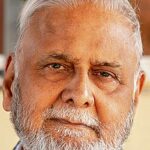The path to simultaneous elections is dotted with hurdles
The Union Cabinet has accepted the Ram Nath Kovind Committee report on ‘one nation, one election’ (ONOE). Union Minister Ashwini Vaishnaw, who announced the decision, also laid out an action plan, starting with the drafting of a Constitution Amendment Bill that will presumably amend several Articles. This ambitious and complicated Bill has to be drafted and presented in Parliament first. Then, it must be passed in each House by a special majority (more than 50 per cent), with two-thirds of the members present and voting.
The Bill, if and when approved by Parliament, will then have to be ratified by the legislatures of half of the states by a simple majority, that is, by a majority of the members of the House present and voting. This is needed because it will seek to amend some critical provisions of the Constitution.
If and when all of the above happens, the Bill will need the President’s assent.
How long will all this take is anyone’s guess. This reminds one of the Women’s Reservation Act, called Nari Shakti Vandan Adhiniyam, which was passed as the 128th Constitutional Amendment Bill, 2023, reserving one-third of the seats for women in Lok Sabha and state Assemblies. It received the President’s assent on September 29, 2023.
Amid the fanfare, most laypersons believed that the 2024 General Election would see 33 per cent women members in the Lok Sabha. However, when that did not happen, many read the fine print to discover that this law would be implemented only after the next delimitation exercise that first required a census to be held. As the 2021 census has not been held so far, when this Act will be implemented is not known.
The same fate awaits the ONOE proposal. It has been reported that LK Advani mentioned in a blog in May 2010 that there should be simultaneous elections. It was included in the BJP’s election manifesto in the 2014 Lok Sabha election. From 2015 to 2018, there was hectic activity about this proposal, but after 2018, the matter seemed to have gone into cold storage. Then, on September 2, 2023, the Kovind Committee was formed. A committee that has such an obvious political intent being headed by a former President was a novelty in itself. This committee submitted its report on March 14, 2024. This report was accepted by the Cabinet on September 18.
Three main reasons have been given for recommending ONOE: recurring poll expenses, suspension of development works due to the imposition of the Model Code of Conduct (MCC) and neglect of governance because ministers get involved in campaigning.
The argument that ONOE will result in significant saving of money that can be used for development works is anti-democratic. I have three questions: Are democracy and development mutually exclusive? Can we have either one or the other? Do we want the most effective democracy or the cheapest possible?
Elections are an essential requirement for the operationalisation of democracy. Do we wish to merely go through the motions of holding elections and provide a formal stamp of people’s approval without them necessarily expressing their true opinion? Democracy has a cost and it will be a sad day when India concludes that it cannot afford to pay the cost of democracy and decides to have the least expensive or cheapest democracy.
Anyone who has read the MCC would know that all it says is that the government cannot introduce new schemes which may have the potential to influence the election result. If there are some new schemes that the government feels must be initiated, the MCC has a provision for that — the government can seek clearance from the Election Commission. The MCC does not prohibit the continuance of ongoing development schemes.
The question of governance suffering because ministers get busy campaigning is baffling. Two issues need to be highlighted in this context. One, political parties, particularly those in power at the Centre and in the states, have a large membership. Therefore, there should be no dearth of effective campaigners. It follows that it should be possible to easily exclude ministers from responsibilities for campaigning during elections.
The second issue is that those who become ministers take an oath of office in which they swear to discharge their responsibilities to the best of their ability. It follows that if they neglect their executive or ministerial responsibilities in favour of campaigning, they are violating their constitutional oath, which should make them liable for prosecution.
What makes the dream unrealisable is the simple fact of the existence of the Basic Structure Doctrine of the Constitution, laid down by a 13-Judge Bench of the Supreme Court (SC) in the landmark Kesavananda Bharati judgment pronounced on April 24, 1973. The essence of the doctrine is that while Parliament has the right to amend the Constitution under Article 368(1), it does not have the right to amend what the SC called the Basic Structure.
The elements comprising the Basic Structure have been laid down in the Kesavananda judgment itself and have been added in some subsequent judgments. One constant element in all such judgments is the federal character of the Constitution. The Constitution has separate sections/chapters titled ‘The Union’ and ‘The States’. Each of these two entities, therefore, has separate and independent constitutional existence, which includes electoral dynamics. Force-fitting all these dynamics into one is a clear violation of the federal character of the Constitution, and is therefore a violation of its Basic Structure.
Even if Parliament and the required number of states approve amendment to some Articles of the Constitution — and the President gives assent to that — it can still be challenged by concerned citizens in court for violation of the Basic Structure and will be subjected to a judicial review.









